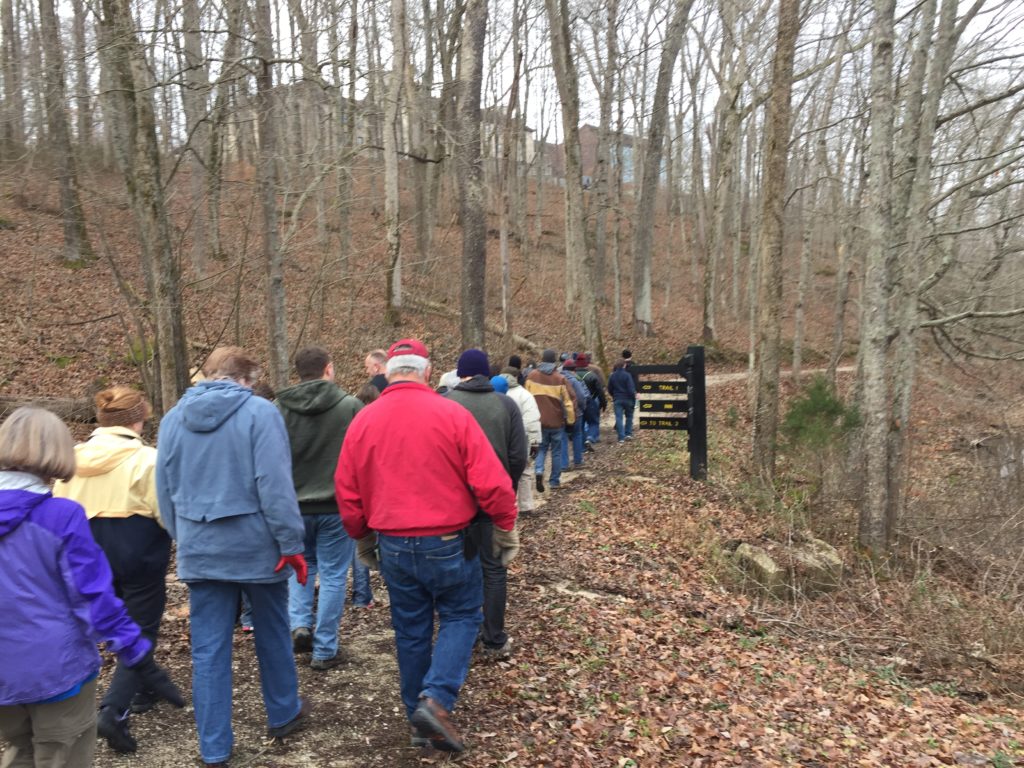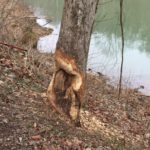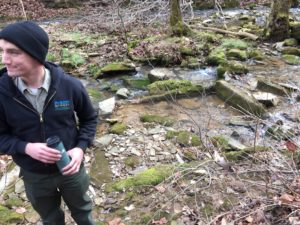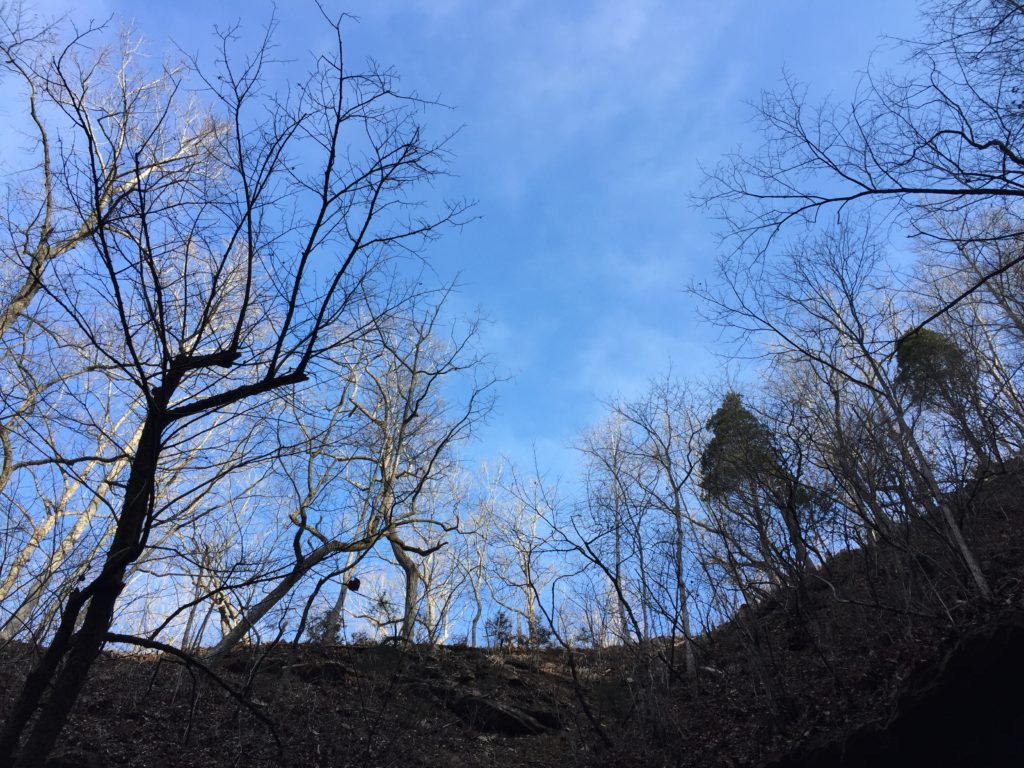
Mitchell, IN–While late night revelers from New Year’s celebrations were sleeping in, many early risers headed to Indiana State Parks on January 1, 2017 to participate in an annual “First Day Hike.” Across the state, parks welcomed visitors to a guided hike, led by a park naturalist. At Spring Mill State Park, wildlife naturalist Wyatt Williams led a group of adults, children, and one small leashed dog on a challenging 2.5-mile hike through the park’s major highlights.

The hike began at 10 a.m. with an easy trek along Spring Mill Lake, created by the Civilian Conservation Corps (CCC) in the 1930s. Williams stopped to point out evidence of beavers, which had gnawed a sizable portion of a big tree, and lopped off many smaller saplings. Williams said there were also a noticeable number of river otters in the park, a result of a reintroduction program begun in 1995 after the otters were wiped out by 1942.
First we stopped at a worn monument to Alexander Wilson. Wilson, called “Father of American Ornithology” by George Ord, preceded John Audubon in cataloging American birds. The monument was carved 150 years ago by George Donaldson, who owned the property of Spring Mill State Park, and unfortuantely very little remains of the likeness carved in the stone. A short walk past the monument, Williams stood in a small area of the creek marked by small stone rectangles.

These were fish ponds created by Carl Eigenmann, an Indiana University ichthyologist from the late 1800s and early 1900s who explored Donaldson Cave and studied the blind fish there.
As a karst landscape, the park features caves and eroded limestone topography. Our trek led us right to one of the more well-known features, Donaldson Cave. It was too wet and we did not have time to explore the interior, but it is open to visitors at various times in the year. Instead, we headed up a cough-inducing set of stairs towards Hamer Cemetery. The trail followed a ridge that led to former quick lime kilns and an overlook of the 1800s Pioneer Village, before heading down past the village and up another hill to complete the loop to the Nature Center. The last owner of the village–Jonathan Turley–acquired it in the late 1880s from the Hamers. On our hike, we were stopped by a couple who wanted to know what our group was. They were relatives of the Turleys, on an annual genealogy hike.
Past the village, Williams pointed out black walnut, persimmon, and sycamore trees along the route, which could be identified by their distinctive bark (for example, the persimmon bark is very “pebble-y” and seeds were scattered around it.)
Hot chocolate and coffee supplied by the Spring Mill Inn greeted the returning hikers. Even better than the champaign toast for a happy, healthy new year.

